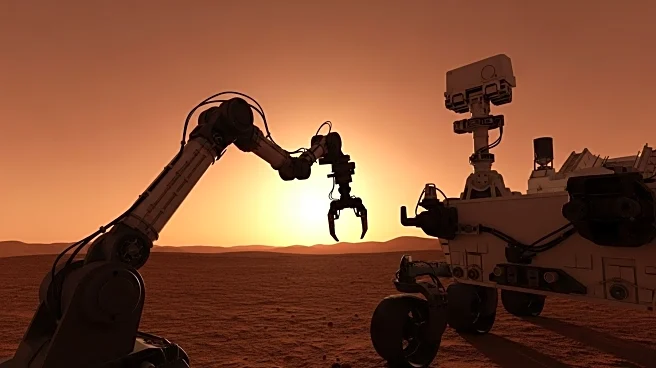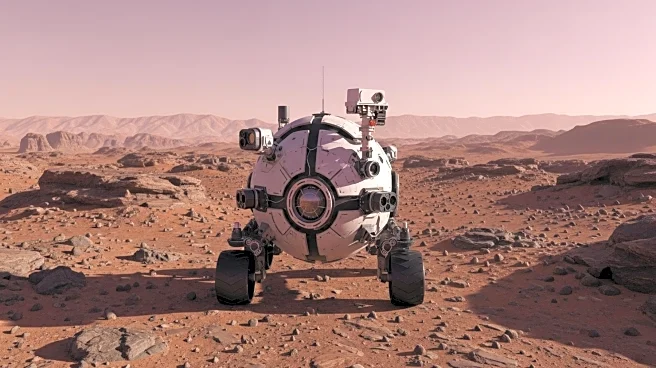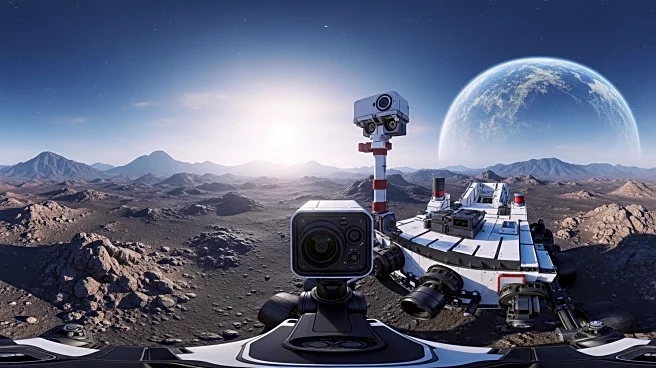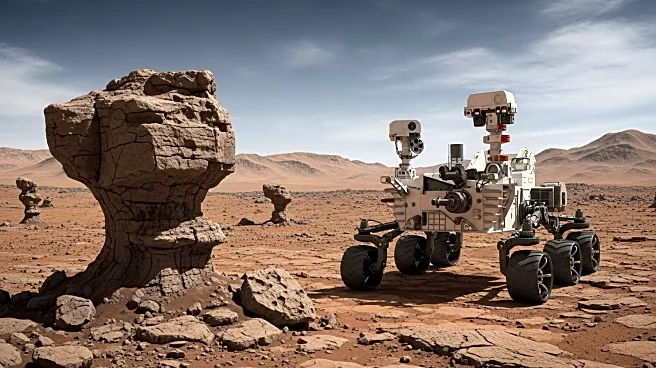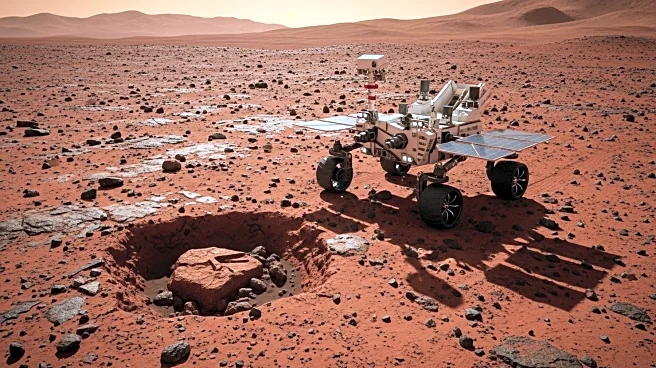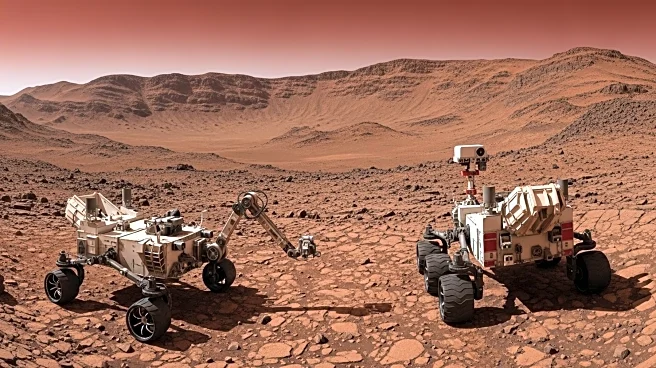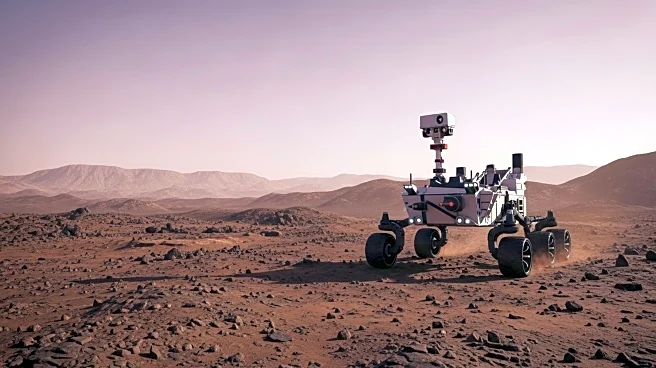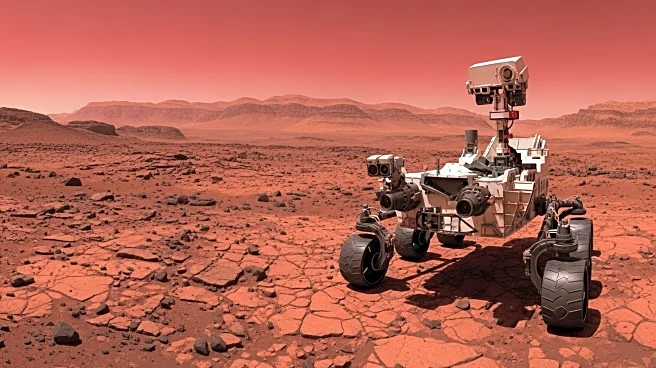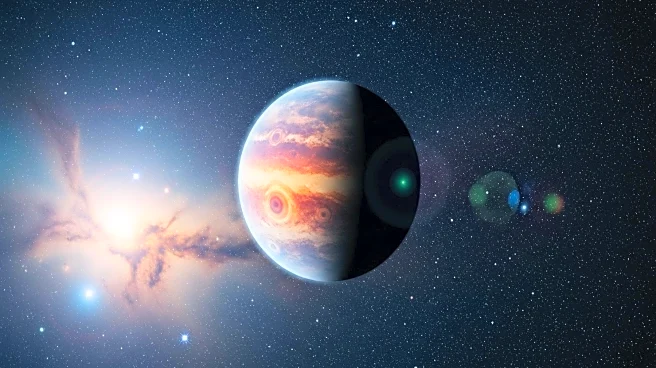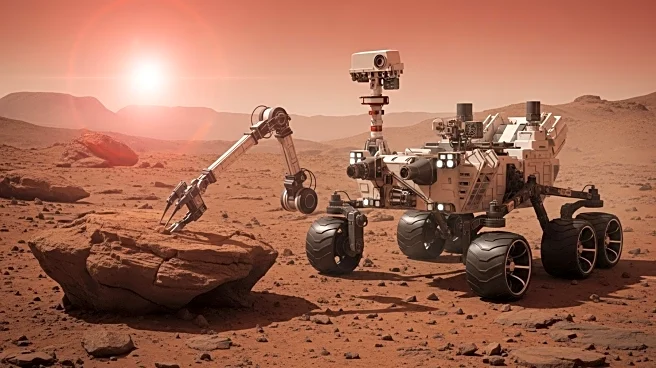What's Happening?
NASA's Curiosity Mars rover has successfully captured a series of images showcasing its robotic arm during a Martian sunset on September 16, 2025. These images were taken on the 4,661st Martian day, or sol, of the mission. The rover's 7-foot-long arm was observed setting its turret, a rotating platform for scientific instruments, onto rock targets named 'Turbio' and 'Rio Aguas Blancas.' The images were captured by the front hazard cameras on the rover's chassis between 3:55 and 4:51 p.m. local Mars time, highlighting the lengthening shadows as the sun set at 4:54 p.m. The Curiosity rover, managed by NASA's Jet Propulsion Laboratory (JPL) in Pasadena, California, is part of NASA's Mars Exploration Program, which aims to explore the Martian surface and gather data on its geology and climate.
Why It's Important?
The images captured by Curiosity provide valuable insights into the Martian environment and the rover's operational capabilities. By documenting the rover's activities and the Martian landscape during different times of the day, scientists can better understand the planet's geological features and atmospheric conditions. This information is crucial for future Mars exploration missions, including potential human landings. The ability to operate and capture data during sunset also demonstrates the rover's versatility and endurance, which are essential for long-term missions on Mars. The data collected by Curiosity contributes to the broader goals of NASA's Mars Exploration Program, which seeks to determine the planet's habitability and prepare for future human exploration.
What's Next?
As Curiosity continues its mission, it will likely focus on exploring new geological features and conducting further scientific experiments. The rover's findings will be analyzed by scientists to enhance our understanding of Mars' past and present conditions. Future missions may build upon Curiosity's discoveries, using the data to select landing sites and design equipment for human exploration. Additionally, the ongoing success of Curiosity could influence the development of new technologies and strategies for robotic exploration on other planets.
Beyond the Headlines
The images captured by Curiosity not only serve scientific purposes but also inspire public interest and engagement with space exploration. The visual documentation of Martian sunsets and landscapes provides a tangible connection to a distant world, fostering curiosity and support for space missions. Furthermore, the technological advancements demonstrated by Curiosity's operations may have applications beyond space exploration, potentially benefiting industries such as robotics and remote sensing on Earth.

